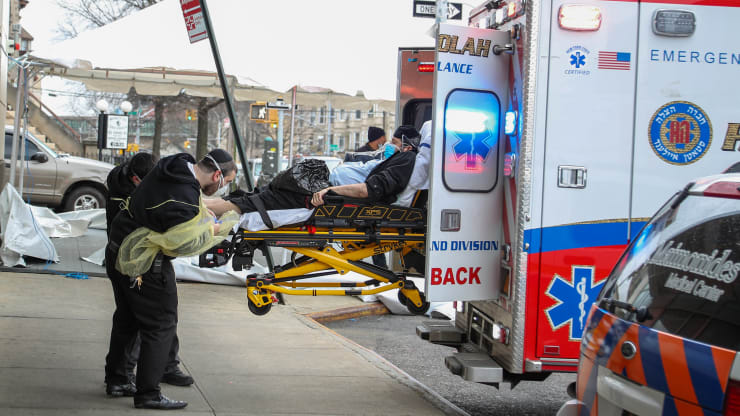Originally Published on CNBC.com
Sarah O’Brien
March 30th, 2020
These may be extra scary times for Medicare beneficiaries.
For the 62 million people enrolled — most of whom are age 65 or older, or younger with disabilities — the coronavirus generally poses a greater health risk. And while Congress and regulators have eliminated out-of-pocket outlays for testing — and taken other steps to improve access to care — treating the virus will likely emerge as the bigger cost concern.
“My sense is people are in a state of anxiety and shock,” said Mary Johnson, a policy analyst for The Senior Citizens League. “This whole thing has moved so swiftly that the cost of treatment hasn’t sunken in yet.”
While some Medicare beneficiaries have additional insurance that covers the program’s out-of-pocket costs — i.e., copays and deductibles — others pay more than their peers for hospital stays and various medical services.
Although most people recover from the coronavirus without requiring significant medicare care, here are costs that could come with Medicare coverage if treatment is needed.
Basic Medicare costs
About 37.5 million beneficiaries stick with basic, or original, Medicare. Many of them have additional coverage — e.g., Medicaid, an employer plan or a supplemental policy (Medigap).
Basic Medicare, which has no cap on out-of-pocket spending, consists of Part A (hospital coverage) and Part B (outpatient care).
If you don’t have additional coverage beyond basic Medicare — 6.1 million beneficiaries did not, at last count — you’d pay a $1,408 Part A deductible for a hospital stay.
That would cover the first 60 days per benefit period. Beyond that, daily copays of $352 apply up to the 90th day. Anything above dips from “lifetime reserve” days at a rate of $704 daily. For patients moved to a skilled nursing facility, there is no copay for the first 20 days; it’s $176 after that.
Medical services like doctor’s visits are delivered through Part B. It has a $198 deductible and beneficiaries typically pay 20% of covered services.
If you have a Medigap policy, many of these costs would be covered, either partially or fully. However, Medigap policies have their own rules for enrolling, which can limit who has access to them. And, they can cost several hundred dollars a month.
Meanwhile, Medicare Part D (prescription drug coverage) also has no cap on out-of-pocket spending. The cost of medicine depends on the specifics of coverage. If there’s a deductible with your plan, it can be up to $435.
It’s worth noting that the $2 trillion coronavirus relief package signed into law on Friday requires Part D plans with quantity limits to allow 90-day supplies for medications.
“Having to go pick up prescriptions a lot could be a barrier to care,” said Lindsey Copeland, federal policy director for the Medicare Rights Center. “We don’t want [beneficiaries] to go out and about if they don’t have to.”
Advantage Plans
About 24 million Medicare beneficiaries get Parts A and B delivered through an Advantage Plan, which also usually includes prescription drug coverage.
These plans may or may not have a monthly premium on top of what beneficiaries pay for basic Medicare. They also typically have different deductibles and copays, and those costs can vary from plan to plan.
The Kaiser Family Foundation recently compared the potential cost of a hospital visit for Advantage Plan enrollees vs. those with only basic Medicare (and no additional coverage).
While there’s no certainty around how long a hospital stay could be from coronavirus treatment, the foundation’s analysis shows the longer the stay, the more Advantage Plan enrollees pay in comparison to those with just basic Medicare.
Not much data is available for coronavirus-related treatment cost or length of stay in the U.S. yet. One group of researchers found that the average hospital stay in Wuhan, China, for patients who recovered was 10 days. However, a separate report looking at U.S. hospital stays for pneumonia shows an average stay of about 3 days, although patients that end up ventilators for more than 96 hours spend an average of 22.6 days in the hospital.
Regulators have instructed Medicare Advantage Plans that operate in states with emergency declarations in place must cover services at out-of-network facilities (that participate in Medicare) and charge the in-network rate.
Some insurers have implemented changes for Advantage Plans — such as waiving certain preauthorization requirements or expanding telehealth services — in an effort to expand access to care for beneficiaries. And on Sunday, two of the nation’s largest insurers said they are waiving patient costs for treatment.
As of Monday, the U.S. had more than 143,000 coronavirus cases.


